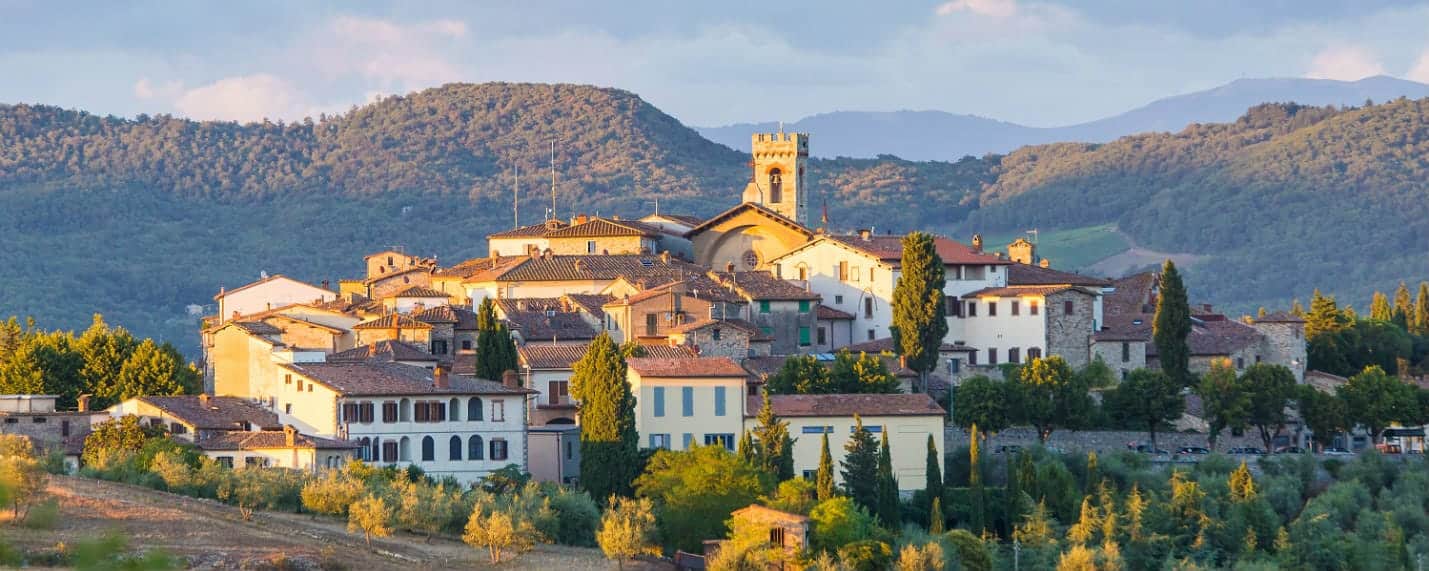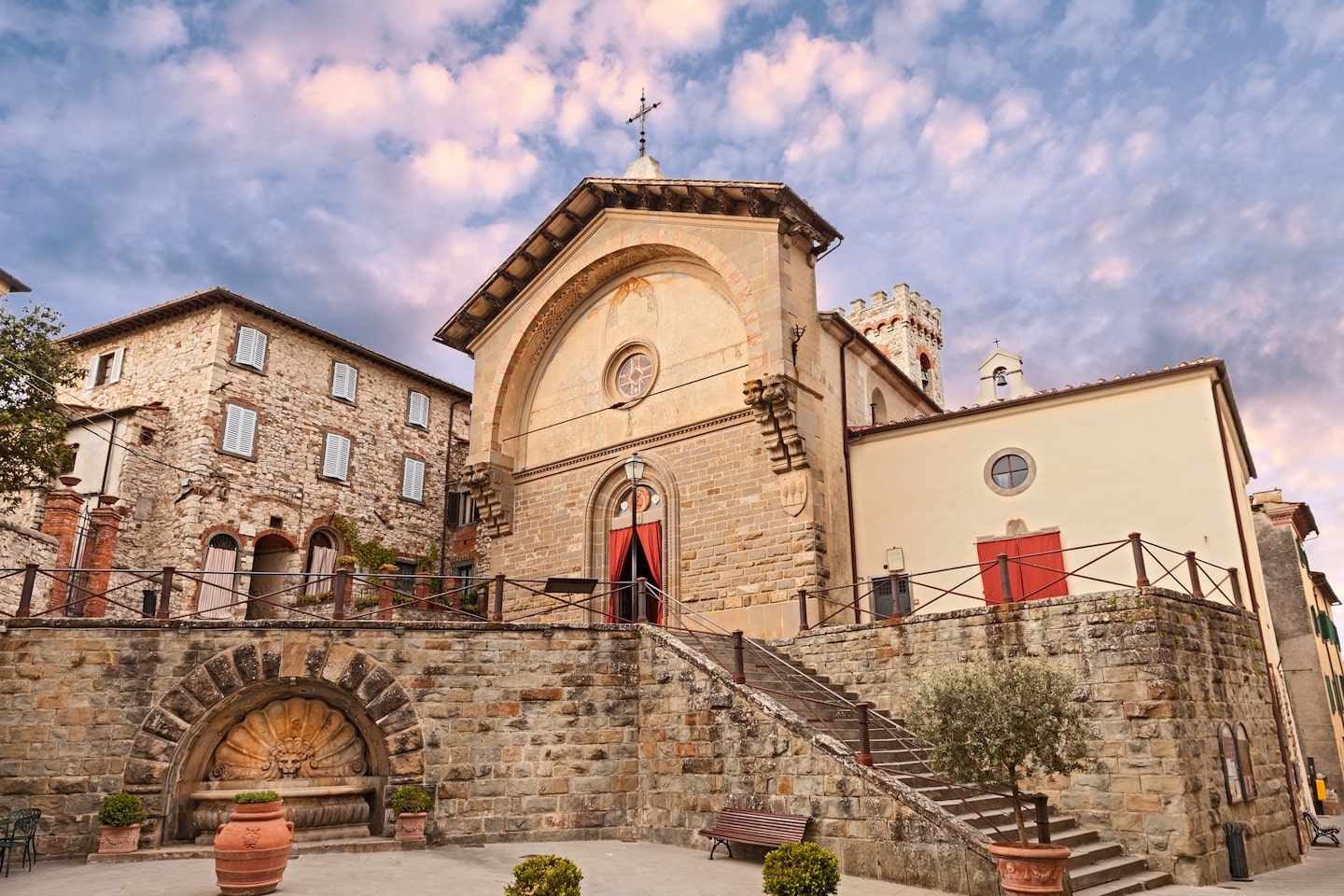The Provost Church of San Niccolò is located in front of the Palazzo del Podestà in Radda in Chianti, at elevated position and to access them you need to climb a flight of steps from via Roma. The first testimony dates back to 1260 when it is mentioned in the Book of Montaperti together with the church of San Cassiano and Santa Cristina of Radda, churches administered by a single rector. In the lists of the tithes of 1276 and of 1303 appears as a suffragan of the Pieve di San Giusto in Salcio. In the complaints in the cadastral of 1427 the rector of the Church mentions the costs incurred for the feast of San Clemente and San Paolo, not owners of the Church. In the XVII century the oratory of Santa Maria del Prato is joined to it, this union lasted until 1708 when the oratory was ceded to the Franciscan friars so that there they institute a convent. In 1660 was elevated to the priory while in 1616 was built the niche for the baptismal font. From a pastoral visit carried out in 1784 showed that the was annexd to the church of San Biagio Vercenni. In 1899 was elevated to the title of the Propositura.
During the second world war the Church, as it is in the historic center of Radda, was considerably damaged so much that if it were not for the reports on the occasion of the pastoral visits and inventories ecclesiastics would be very difficult to trace the appearance that the Church should have had between the XV and the XVI century. The intervention of greatest impact the subdued the facade that in 1926 it was rebuilt in neoromanico style by Adolfo Coppedè, on that occasion was rebuilt also the square below with the realisation of the public fountain from which the water flows from the mouth of a lion; in the design of the Coppedè also appears a pencil drawing that shows the facade before intervention.
Previously, in 1837, was restored the bell tower; the original bell tower was demolished and rebuilt in the 18th century, while the bell tower was built in the fifties resting on one of the towers of the ancient castle of Radda. The last interventions of restoration on the factory of the church date back to 1969 when it was restored the apse and and was made the new presbytery and another intervention was made in 1997 with the consolidation of the bell tower and the installation of a device to play the hours.
Currently the church presents the facade in the neogothic style on which you set an arch member to all sixth surmounted by a gable roof supported by two corbels in the shape of a lion heads. Inside of the arch are visible traces of a neo-Gothic fresco exemplify the benedictory Christ above the rose window and the Nativity in the lower part; these frescoes, today almost invisible, were attributed to Carlo Coppedè, brother Adolfo. The wall of the lower part of the facade is constituted by drafts of sandstone, the portal of access is also in sandstone and is surmounted by a lunette at the center of which there is a terracotta depicting the Madonna and Child and to the sides, in enamelled terracotta in white are 2 angels. The interior has a single nave in the form of a latin cross with a trussed ceiling wooden and is concluded with a quadrangular apse.



